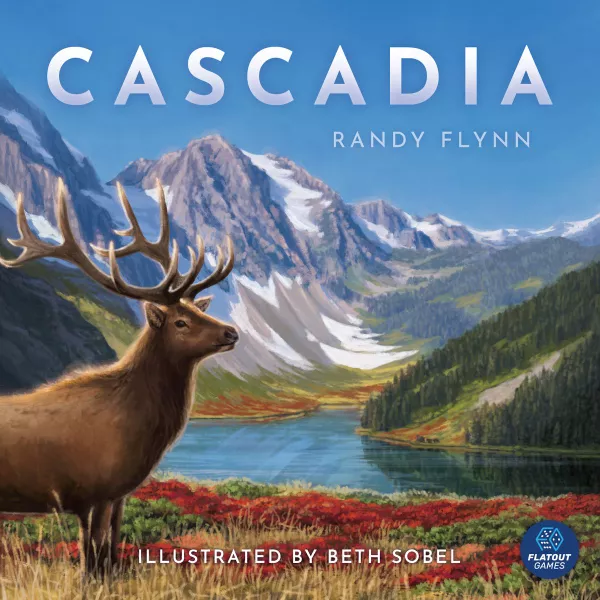Cascadia, designed by Randy Flynn and published by Flatout Games, is a puzzle tile-laying board game, perfect for families. The game resolves around drafting tiles and tokens to create habitat areas for wildlife, emphasizing pattern-building and strategic placement. These simple mechanics allow for strategic depth and accessibility.
Cascadia uses the starter habitat tile to introduce the player the core interaction loop in the game, facilitating efficient onboarding.
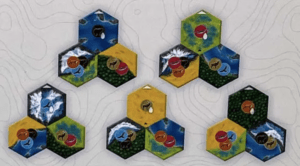
This allows the player to build a mental model of the game early on. To start, my strategy was just to expand my existing habitats as I did not yet know how the game worked. Once I drew the tile that would best fit into my habitats, I decided where to place my first animal (a fox) on the only open fox space I had. I then had to read more into the fox card to learn what my possible strategies were. Since in our game foxes only scored points based on surrounding pairs, I then had to analyze my other habitat tiles to see what animals I needed, which helped me make my future decisions on which tiles and tokens to draw. This then created the core interaction loop I would follow, as my future strategies would be influenced by my current draw. By giving the players all habitat starter cards, Cascadia simplifies the onboarding burden to allow the player to dive into the core of the game from the outset.
Furthermore, Cascadia emphasizes the challenge aesthetic by forcing players to draw habitat tiles and animal tokens in pairs. This mechanic creates a two-layer puzzle to maximize contiguous habitats while strategizing for animal token placement. In Figure 2, you can see how I wanted to build another pair of animals for my fox circles in red.
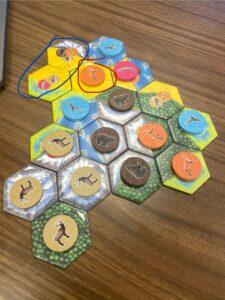
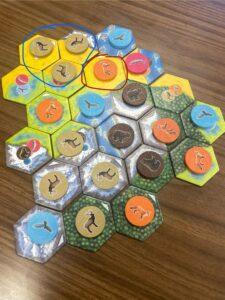
Thus, I went for tokens that had plains and more animal placement options. Since bears were only worth points if they were in a full set of three, I decided to go with elk as I could scale them from one to four elk and still get points. This restraint in addition to the scoring mechanics satisfy the competence motivation in the Self-Determination Theory, as it’s easy to learn but difficult to master. Seeing how the tiles and tokens are placed gives the player immediate feedback, and the players can estimate their points throughout the game. In addition, Cascadia balances the scoring between animal points and habitat points well. Even though I did not get as many animal points as the others, I made up for it in habitat points.
Moreover, the varied scoring objectives for wildlife token matching make the game feel balanced and exciting. Because the scoring objectives for animal patterns change by game, it gives new players a fair chance and excited experienced players by making it feel like a different game. This affects overall strategy as players must adapt their game plan based on the specific objectives of the game. We used scoring pattern B.
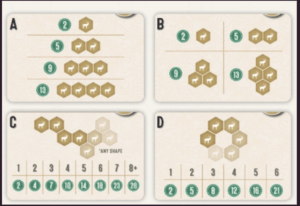
Because foxes were scored only on adjacent animal pairs, my strategy was to maximize the number of elk and bear pairs adjacent to the foxes while also achieving the elk and bear patterns as well. However, if we used scoring option A for elk, it would be a very different game for me as I would have to strategies how to place elk in a line surrounding the foxes. Cascadia balances the different animal objectives very well. An example of this is how most animal tokens will give 3 points if obtaining a certain pattern, but a combo of 3 bears will give 10 points. Bears are worth more points because a combo of 1,2, or 4+ bears would make the pattern invalid, so the game rewards this high risk.
With a two-layered puzzle, emphasis on pattern building and deliberate arrangement, Cascadia builds a balanced game that allow for strategic depth.


